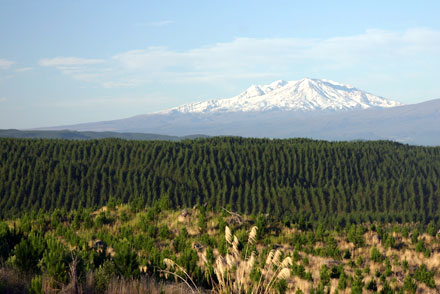
The forestry industry needs to highlight career and economic opportunities if it is to meet a government proposal to plant a billion trees nationally in the next decade, a Taranaki forestry consultant has said. Source: Stuff NZ
Regional Development Minister Shane Jones released an ambitious plan as part of the coalition agreement between New Zealand First and Labour to plant 100 million trees a year over the next 10 years.
Currently 50 million trees a year are planted for commercial harvest.
Under the previous government’s afforestation grant scheme, landowners received $1300 per hectare to plant new forests.
NZ Forestry Ltd Taranaki regional manager Cam Eyre said the new proposal presented a lot of opportunities for people in the region.
“The government’s proposal has merits, forestry is a good employer but the industry needs to tell our story better.”
Eyre said the industry had past boom and bust cycles but current log prices are “outstanding”, with prices per tonne double that of two years ago.
“Here in Taranaki we have the potential to plant more trees, either for carbon farming or for harvesting, but land use dictates what is planted, and the productive flat land is used for dairying,” he said.
Landowners have to want to plant trees, because they won’t get a return for 25-30 years, he said.
They would need decide what is the best use of their land was if more trees are going to be planted in the region, he said.
“It’s how private landowners decide to use their land.
“If they are able to get a subsidy to plant more trees it will become a good opportunity for them to invest long term.”
Currently 130,000 tonnes of logs are harvested annually from 6000 managed hectares of forest in Taranaki, mainly in southern and eastern hill country areas. Forests planted in the early 1990s are now ready to harvest, Eyre said.
“We don’t have the big corporate forests as elsewhere and lot of planting in Taranaki has been done on private land without a lot of co-ordination to future harvesting.
“Back then the landowners didn’t estimate the total cost of harvesting.”
There had been a lot of “stop – start” harvesting as a result, and landowners are hesitant to look at the long term investment, he said.
“The planting in the 90s in Taranaki was on hill country, it was mainly waste land and wasn’t well co-ordinated and its now proving costly for landowners to get the logs out.”





